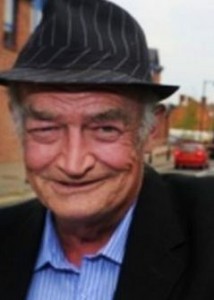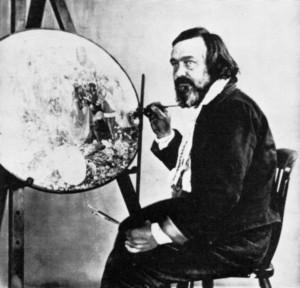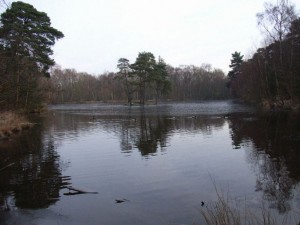Aside from the plastic pumpkins, fancy dress witches, sweets and latent threats which accompany the Trick or Treater, there lies beneath the surface an underworld of darkness. It is the night when the ghosts and ghouls are free to roam our surface for just one night. You have been given fair warning.
Do you believe?
To help us rediscover the essence of Halloween, we seek the help of Roger Long, our local Paranormal Historian; a man who has spent his life disproving (or otherwise) tales from the underbelly of darkest Berkshire.
“Make no mistake” says Roger, “there are stories I have investigated which can’t be explained”. Somewhat surprisingly for a ghost hunter, Roger Long has a cheerful nature; quick to crack a joke and following up each sentence with a friendly smile. At this moment though he is deadly serious and his eyes shine like steel; eyes which have seen ‘things’ we surface dwellers could never understand. “There are places, whether they be houses, or lakes or just pieces of ground, where your sixth sense creates in you a sense of overwhelming depression and foreboding”. Halloween is the one night when these spirits are set free to feed upon the fears of the living and the organisation of parties and frivolity are the only way to keep these beasts from the underworld at bay. For the rest of the year they live only in the corner of your eye.
What then is Halloween?
The pre Christian Celts divided the year into four major holidays based largely on the changing seasons. November 1st (as we know it today) was the start of the winter months when nature enters its longest sleep and its festival, known as Samhain was a celebration of this great cycle of life. So how did this celebration become associated with all things spooky? When the Christians appeared in Britain they had a problem with removing ‘paganism’ and Pope Gregory (601 A.D.) decided rather than eliminate the pagan holidays, missionaries could replace them with Christian celebrations such as ‘All Saints Day’ which is otherwise known as ‘All Hallows Day’. Gregory knew not to get in the way of a good party. Pagan rites on this day gradually became associated with evil doings and with the help of some puritan spin, the perpetrators were deemed to be witches. The old Celtic rituals and stories told of pixies and fairies and they too become a part of the folklore of Halloween Night (the night before the new cycle of Winter).
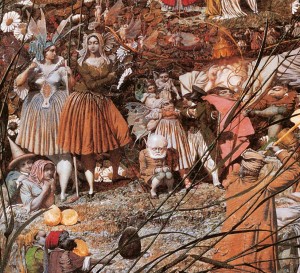
‘The Fairy Feller’s Master Stroke’ took Richard Dadd 9 years to paint. This is only a part of the overall canvas
“There was a famous local painter of fairies and the underworld”. When Roger grins, we know there will be a sting in his tale’s tail. The artist’s most famous work is ‘The Fairy Feller’s Master Stroke’, a painting which shows the fairy feller taking an axe to a chestnut for the making of Queen Mab’s new fairy carriage. It is an early example of Surrealism and we understand why. “The famous local painter was Richard Dadd who produced this work during the 1850’s in Bedlam Asylum. Dadd murdered his father and was found to be insane”.
During the year of 1863 Dadd was moved to Broadmoor in Crowthorne and was allowed to continue his painting for reasons of good therapy. Broadmoor, although not in the same league as the ultimate symbol of Halloween as is Bedlam, does itself bear a notorious history. The siren which wails each Monday morning at 10am is a test to warn us in case a patient has escaped from his confines.
Ghosts exist, but maybe not as we know it.
Does Roger really believe in any of this ghosty nonsense? “A great deal of it is nonsense, but there are parts of it which I believe require more investigation. There is a difference between ghosts and poltergeists. A lot of the stories of ghosts I have noted to be close to water, like lakes and streams and I question this to be just coincidence.
Heath Pool in Simons Wood (Wellingtonia Avenue, Finchampstead) has a desolate feel about and I know of three accidental deaths there and the same number of suicides”. Following up on Roger’s line of thought, it seems there are a number of investigators who share his opinion. Ghosts are interpreted as merely pictures from the past and water has the ability to retain and trigger these pictures in the same way as the mix of chemicals and light create photographs. Berkshire has a national reputation for being one of the most haunted counties in England. Its geology therefore might provide a clue for this array of haunted happenings. In the Ice Age, the bergs made their way down the M1 and came to a halt somewhere just north of Watford and Reading. On their travels the bergs pushed gravel and sand in front of them. The gravel lays on top of the underlying clay which itself prevents water from draining through. The result is a plethora of murky pools in the area and a haven for gravel raising and therefore more lakes. So maybe there is a connection between water and ghostly apparitions as a result?
Poltergeists. Be very afraid
Poltergeists, according to Roger are a completely different entity however. They can be something of a menace, unlike those benign ghosts and apparitions.
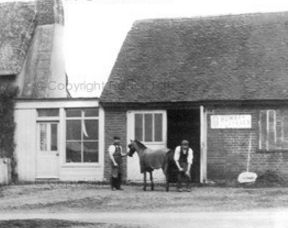
The Old Forge Finchampstead. Copyright Francis Frith (click to purchase local photos)
“The doyen of all things that go bump in the night was Harry Price who was an investigator during the first half of the 20th Century. There was such great disturbance at the Old Forge in Finchampstead, that Harry and representatives from the Daily Mirror were called upon to investigate. During the summer of 1926, a Mr Goswell and his family suffered a terrible onslaught of flying bicycles, nails, tables and chairs and were forced to move into one room for safety. At one time they awoke to find the word ‘GO’ scratched onto the ceiling. The local policeman visited the family and gave them an awful telling off for wasting police time. As he rode away on his bicycle, he was hit on the shoulder by a flying brick with no one in sight to take the blame”. It is typical of Roger to end a story on a whimsical note; probably a technique he learned in order to not frighten the living daylights out of you. Roger views a lot of the stories as the subject of great amusement.
But not all of them.

